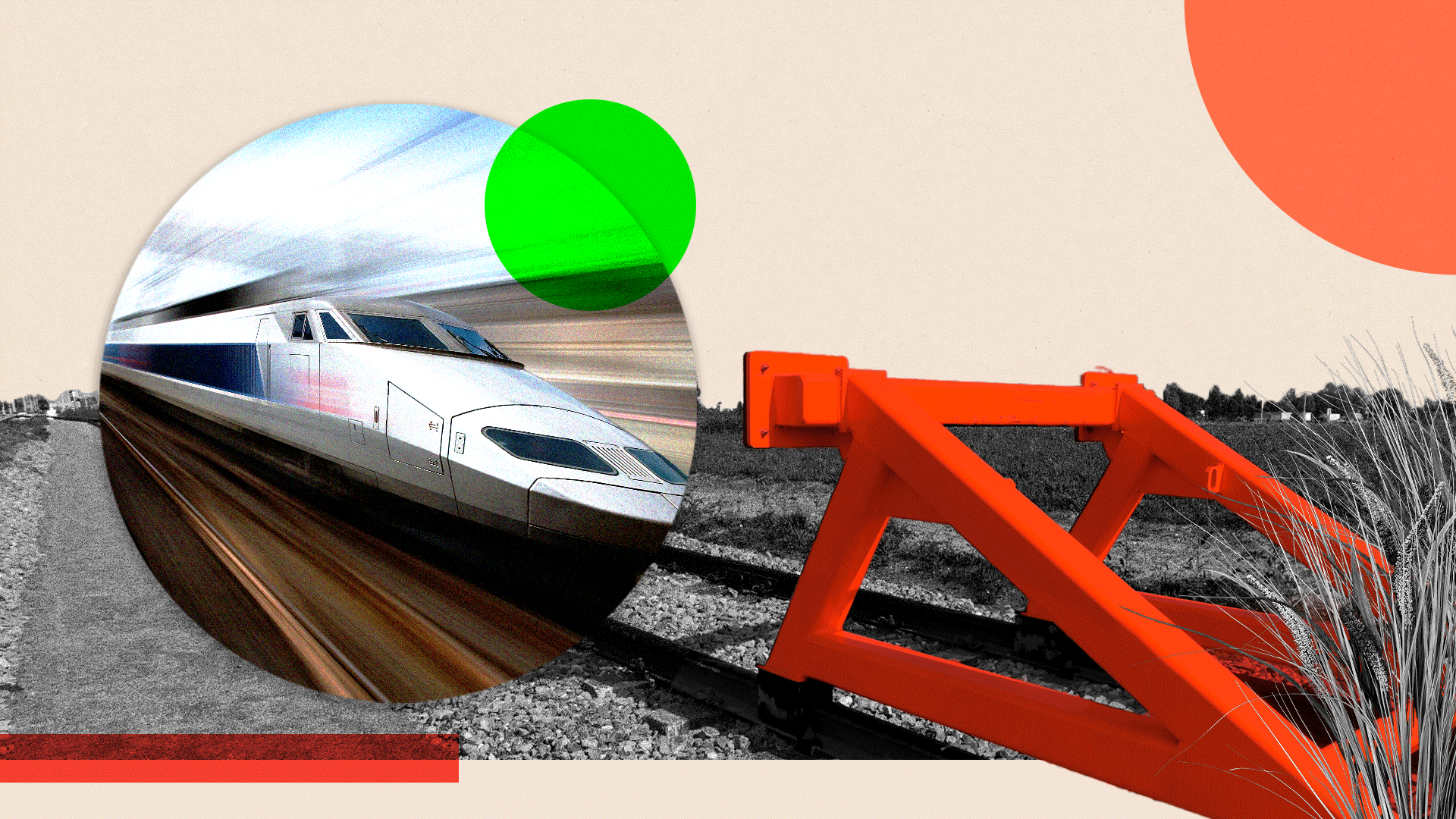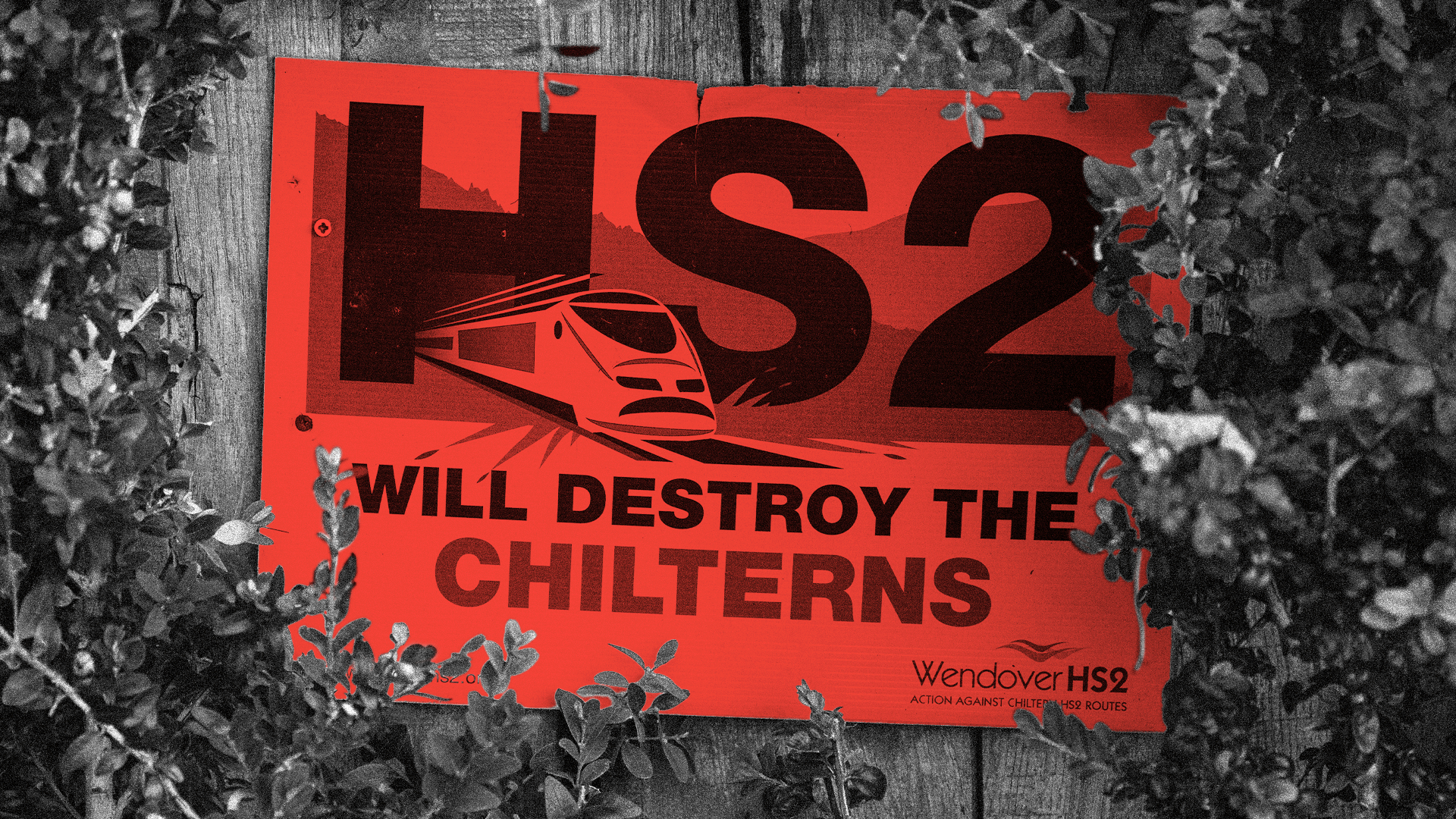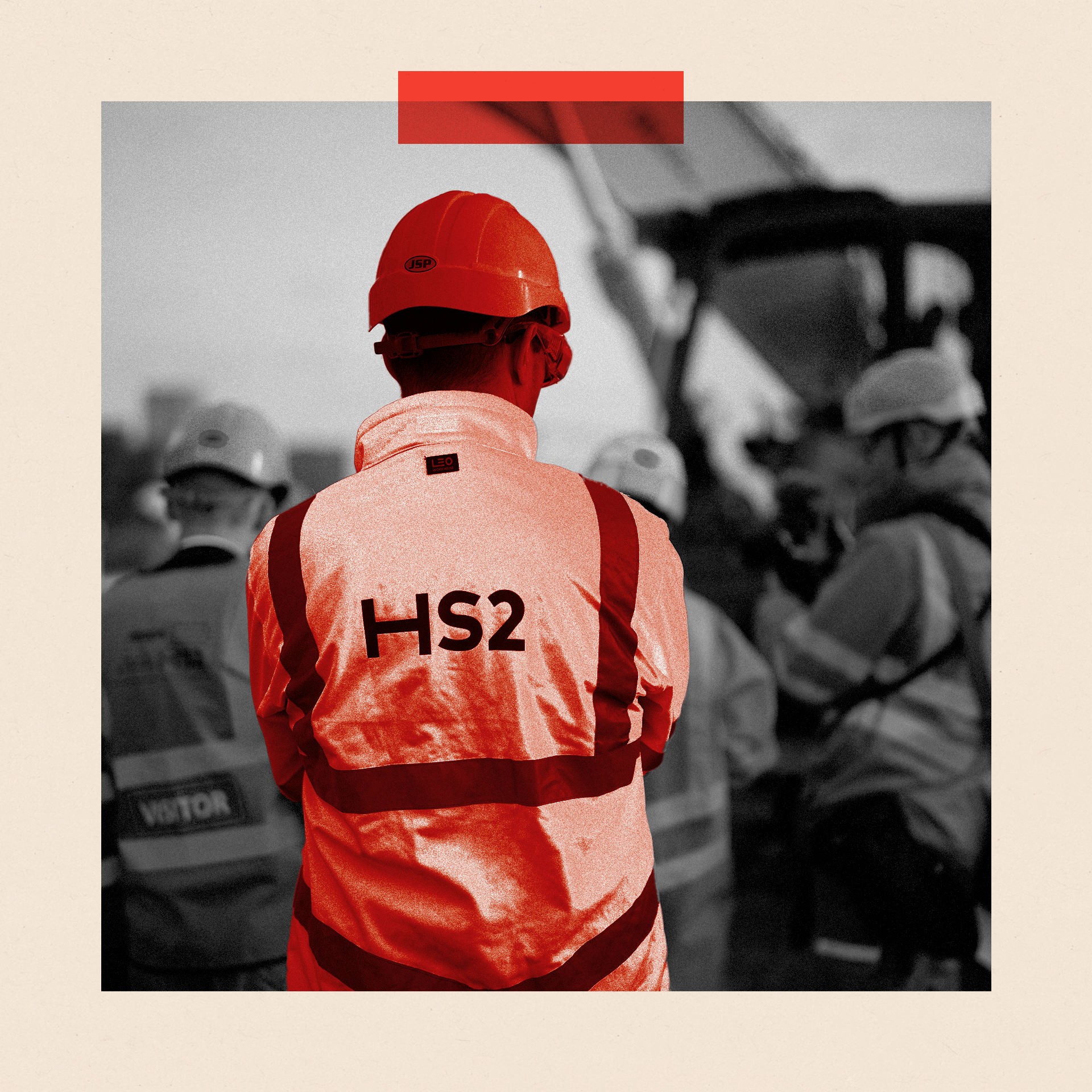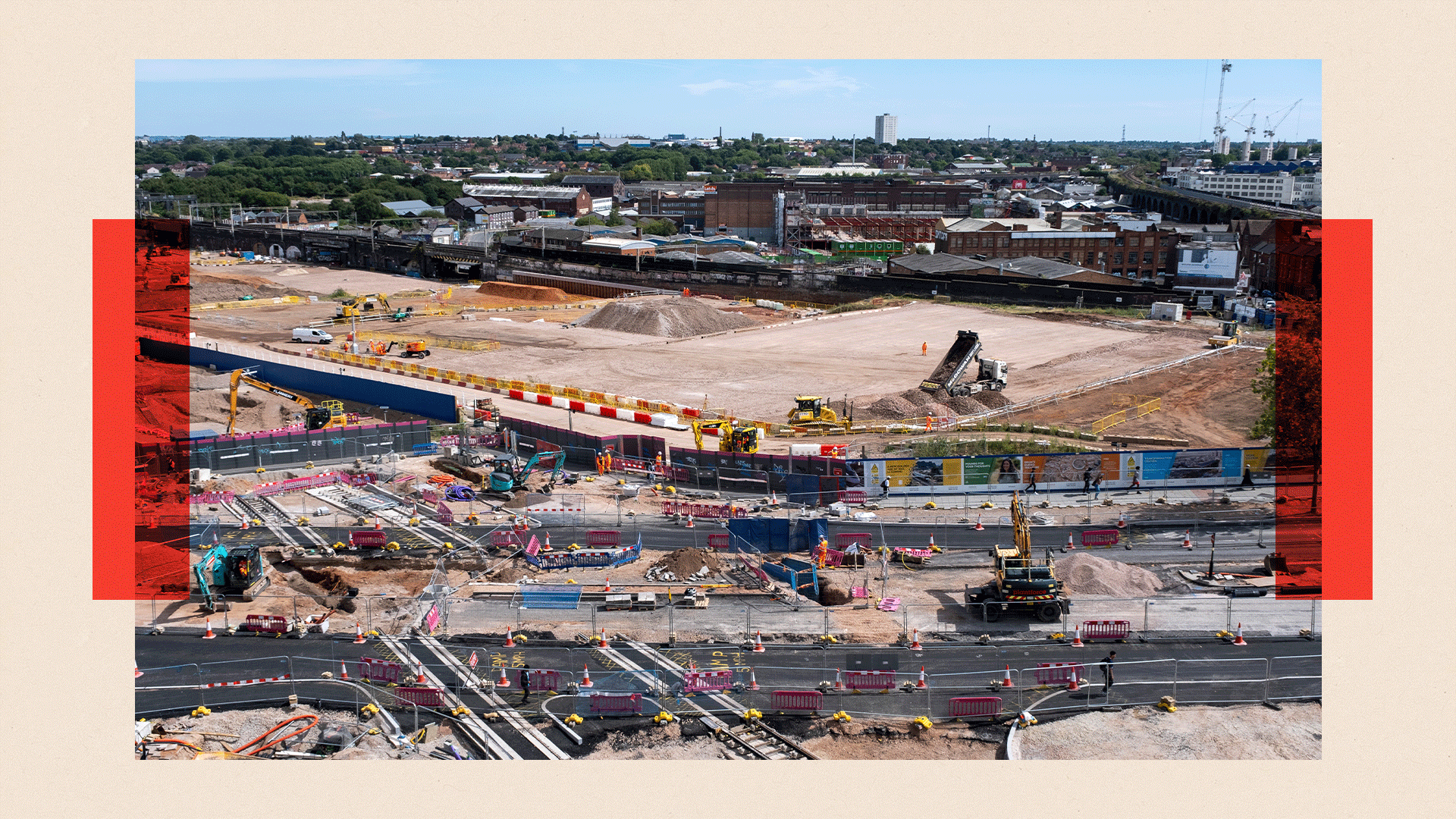
There is no shortage of places to start when trying to make sense of what went wrong for HS2 and how for around twice the original budget we’re getting half the line that was planned.
One starting place is the name itself - High Speed 2.
Nobody wants a slow railway. But was it ever wise to build a super-fast one?
HS2’s journey began in the 1980s. Rail experts looked across the channel at France’s new high-speed TGV network and dreamed of a similar service here.
The TGV trains swishing through the French countryside at just under 200 mph were in stark contrast to the UK’s creaking rolling stock.
HS2 promised gleaming new trains racing between English cities at even faster speeds.
A government commissioned study in 2006 had concluded Britain needed greater rail capacity. Launching his report, Sir Rod Eddington said: “My first recommendation to Government is…to improve the capacity and the performance of the existing transport network.”
He was lukewarm on speed.
HS2 did bring increased capacity but, as the name demonstrates, it was clearly sold on speed.
A few weeks before Gordon Brown’s Labour government left office in May 2010, they made the case for High Speed Rail to MPs. They said building a conventional rail line to address capacity issues would cost almost as much as building a high-speed line.
Little did they know.
Andrew Gilligan was a transport advisor to Boris Johnson and Rishi Sunak and is a critic of HS2.
“Unlike Spain or France or Germany, all the main cities of England are within 200 miles of all the others, apart from Newcastle,” he says.
“The extra time you save simply isn't worth the enormous extra expense of building it.”
But speed helped attract politicians to it with the promise of a super quick connection between London and Birmingham, with trains racing further north to Leeds and Manchester. London to Manchester would take just over an hour instead of just over two.

HS2: The Railway that Blew Billions
HS2 was meant to be the railway of the future, but more than a decade on the project is mired in uncertainty. Richard Bilton investigates what went wrong.

But faster trains don’t only require better motors.
A train that travels at 230 mph needs a very straight line and that’s where cost starts to come in.
To get to Birmingham from London, it would need to go through the heart of the Chilterns, an area of outstanding national beauty.
Less controversial routes like alongside the M40 motorway were ruled out.
Opposition came from Tory MPs speaking on behalf of unhappy Chilterns residents.
They demanded expensive tunnels and cuttings to keep the new trains out of sight.
Preserving the rolling hills meant more money went on engineering.
In the end, 11 tunnels were commissioned between London and Birmingham, burying the line for 32 miles of the 140 mile track. There were 50 viaducts.
Philip Hammond was Conservative transport secretary from 2010 to 2011 and Chancellor from 2016 to 2019.
“I think we drove much more cost into the project than people perhaps were understanding at the time,” he says.
In 2011, HS2 was costed at £32 billion. By 2013, the budget had risen to just over £50 billion.
From the start, questions have been raised about HS2’s use of taxpayers’ money.
In 2009, the Labour government had set up HS2 Limited: a company spending public money, one whose existence was by definition dependent on the project not being dropped.

Sending HS2 through the Chilterns sparked local opposition that resulted in parts of the line being buried using expensive tunnels and cuttings
Andrew Bruce joined the company in 2015. His job was to buy all the land and property for phase one of the project.
He says that in his first week he was given two sets of figures.
According to Mr Bruce, one set was to be used to show the government in presentations. He says these showed HS2 was on track to purchase the land on time and on budget.
He says he was also given a second set of figures which showed there was no way HS2 could buy all the land and properties needed while keeping to that budget. And he says his own work subsequently found even higher estimates for land and property costs.
He says that HS2 Ltd was not being honest about the likely costs even though HS2 Ltd was being paid for by the taxpayer and spending public money.
HS2 disputes this. It says these allegations have been put under intense scrutiny by the National Audit Office which found nothing untoward. Andrew Bruce doesn’t accept the conclusions that HS2 draws from the NAO findings. He believes there should be further investigation.
One insight into how HS2 Ltd operated can be gleaned from the redundancy payments it gave its staff when jobs moved from London to Birmingham.
The Commons Public Accounts Committee found that had HS2 followed statutory redundancy terms, 94 individuals would have received a total of £1 million.
In fact, they received a total of £2.76 million, paid for by the taxpayer.
“We were very, very cross about that. We felt that signalled an attitude at HS2, that it was other people's money that they were spending, and they were looking after their own,” Dame Meg Hillier MP (Labour and Co-Op), then chair of the committee, told me.
At the time of the committee’s report HS2 Ltd acknowledged the payments were a “serious error”.
You might have thought a megaproject costing billions would be a political priority. However, in 2017, Brexit was dominating the agenda and if an outsider had the impression that MPs were distracted when they voted through the country’s biggest infrastructure project, they’d be right.
Philip Hammond told me: “I'm sorry to disappoint you, but HS2 was not the main issue of the moment. The government was teetering on the brink, trying to deal with the daily hourly pressures of the Brexit negotiation. Long-term projects were perhaps not seen as quite as immediately urgent.”
By the time of the vote, many believed the likely costs would be much more than the officially budgeted £55.7 billion. An internal government document produced just before the HS2 scheme was finally approved by Parliament in 2017 suggested the final figure could increase to more than £80 billion.
Lord Hammond told us it would be unrealistic for every bit of treasury modelling to go before parliament.
It just so happens that on this occasion the modelling was right, and by 2019 the new figure was indeed almost £80 billion.

When HS2 jobs moved from London to Birmingham, redundancy payments exceeded statutory requirements
And what of the machinery of state’s role in all this?
Did the civil service do its bit to provide the true picture of rising costs?
Bernadette Kelly was the top civil servant in the Department for Transport.
In October 2018 and May 2019 she appeared in front of the Public Accounts Committee. At the time, her department was aware that projected costs were rising. But in public, she stuck to the official budget figure of £55.7 billion.
Meg Hillier was not happy with Kelly’s evidence: “We felt it wasn't as forthcoming, and she wasn't as forthcoming as she should have been to the Public Accounts Committee. And it, you know, came close to misleading Parliament…”
Dame Bernadette Kelly says when she appeared before the committee her comments were accurate and reflected the then government’s position.
Whatever the case, it’s pretty clear that the parliamentary committee whose job it is to scrutinise public spending felt it wasn’t getting a clear picture of what was going on with the country’s biggest infrastructure project at a time when it was ballooning in cost.
Meg Hillier says trying to keep a hold of HS2’s budget highlighted an age-old problem with the way government handles big spending projects like HS2.
“It's a dance that gets played. A sort of shadowboxing that goes on between the taxpayer, parliament and government.”
The consequences of that might not always be enormous but with a project of this size and complexity, the shadowboxing can cost the taxpayer billions.
HS2 has been through seven prime ministers and five general elections.

The most recent government estimate says HS2 between London and Birmingham will cost between £45 and £54 billion
It’s been a long-term national infrastructure project in a short-term and highly volatile political cycle, one where politicians needed it to deliver personally for them.
David Cameron adopted HS2 because it supported his idea of a Northern Powerhouse.
For Boris Johnson, HS2 was about delivering on his promise of levelling up Britain after Brexit.
After his 2019 election success, the high-speed line became part of that agenda.
Former journalist Andrew Gilligan was Boris Johnson’s transport advisor.
“He'd scored a huge victory, on the basis of an awful lot of people who'd never voted Tory before in the north,” he says.
“He was concerned that if we cancelled HS2, it would harm his chances of re-election.”
Eventually political support for the original vision of HS2 crumbled.
The music didn’t so much stop for the line as fade out: the leg to Leeds was winnowed away and lost finally in 2021.
In 2023 then Prime Minister Rishi Sunak cut the leg between Birmingham and Manchester. All that was left was the line between Birmingham and suburban west London – for now, trains would terminate at Old Oak Common and not Euston in the centre of the capital because of a lack of cash.
HS2’s problems are very close to home for Prime Minister Keir Starmer. The Euston site is in his constituency.
The government’s last estimate of the overall cost for the remaining Birmingham to London stretch is between £45 and £54 billion.
But independent rail expert Michael Byng says it could go high as £87.8 billion.
That would mean taxpayers forking out more than double the original budget for half of the line that was promised.
Andy Burnham, the Labour Mayor of Greater Manchester, says it’s crucial we learn the lessons.
He says even after all the money that’s been spent the north is still short of capacity and needs a new line.
“The handling of HS2 should be like a morality tale in Whitehall. This was the worst example of utter waste of public money.”
Last week Mr Burnham was one of those unveiling plans for a new rail line linking the West Midlands and Greater Manchester, one that its backers say can be delivered at a fraction of the cost of the scrapped northern leg of HS2.
Labour’s new transport secretary Louise Haigh told me: “...the serious financial challenges we have inherited on this project have become apparent, and it's dire."
Some say, irrespective of the cost, in the end the nation will be grateful for HS2.
The argument goes that infrastructure projects often overspend, the focus should be on long-term benefits.
But few projects overspend on such a massive scale and deliver so much less than was promised.
When it opens – in about 10 years – that much-needed rail capacity between the south and Birmingham will have increased significantly.
But a journey on HS2 from Birmingham to London’s western suburbs and then into the centre of the capital will take about the same time as a train between Euston and Birmingham does now.
For that stretch of railway, High Speed 2 might be better named High Capacity 2.
Had that been the main aim from the start, a lot of cost and grief might have been avoided.
More from InDepth
Stephen Lawrence would have been 50 today. Is there still a chance to get justice for him?
- Published13 September 2024
The great gene editing debate: can it be safe and ethical?
- Published11 September 2024
A tent city next to Mayfair: Why cutting homelessness might be harder than before
- Published9 September 2024
BBC InDepth is the new home on the website and app for the best analysis and expertise from our top journalists. Under a distinctive new brand, we’ll bring you fresh perspectives that challenge assumptions, and deep reporting on the biggest issues to help you make sense of a complex world. And we’ll be showcasing thought-provoking content from across BBC Sounds and iPlayer too. We’re starting small but thinking big, and we want to know what you think - you can send us your feedback by clicking on the button below.
Get in touch
InDepth is the home for the best analysis from across BBC News. Tell us what you think.

